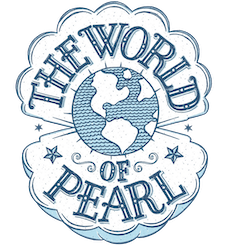I lead talks on the difference in freshwater and saltwater pearls. I love talking about the differences in the way they are cultured, the differences in water environments, the differences in production and more. But, let’s say, you take away all of the details surrounding how these pearls are cultured. What is the difference in saltwater and freshwater pearls? To analyze this, lets look at two natural pearls.
If you have two pearls and both have been formed naturally, with no human intervention, how would you know which is saltwater and which is freshwater? By how it looks? Not possible. By its coloring? Well, that might be an indicator but it certainly wont prove anything. If you did not know what type of water they came from, saltwater of freshwater, how would you know what type of pearl they are?
If you were in this predicament, you could take your pearls to a lab and they could solve this problem with this:
It is a Energy-dispersive X -ray fluorescence and what it does is detect chemical elements by exposing them to xray and analyze the way they fluoresce.
Scientists know there is only one difference in saltwater and freshwater pearls. It is manganese. In freshwater pearls, the manganese is slightly higher than saltwater pearls. Here is the results of a freshwater pearl that has been tested using Energy-dispersive X -ray fluorescence.
And here is what the graph looks like after x-raying a saltwater pearl:
So, after all of the differences in how these pearls are produced, cultured and even perceived, there is only one difference in saltwater and freshwater pearls. They both are primarily made of calcium. But, freshwater pearls have a higher amount of the mineral manganese!
I am a modern day treasure hunter who travels the world for gorgeous pearls and amazing adventures. I own a pearl jewelry and jewelry repair business, ThePearlGirls.com, with a cute retail store in Athens, GA. I also have a Pearl Travel business and travel blog at TheWorldofPearl.com.





